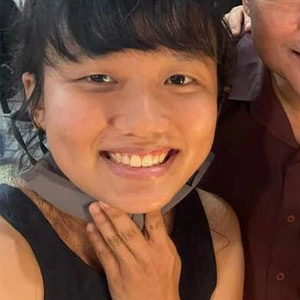- Partake in the monastic-inspired dance. Discover the century-old Tengboche monastery along with other religious shrines like Thame and Chiwong.
- Combine cultural exploration with scenic sights as you venture the Everest Base Camp. Look out for the surrounding mountains like Nuptse, Cho Oyu, and Pumori.
- Explore Sagarmatha National Park and its scenic landforms, home to exotic wildlife and native vegetation.
With the picturesque mountains at the backdrop and serene atmosphere, the trek provides a sense of joy to trekkers. It adds a spiritual dimension to the trek and gives the visitors a chance to sneak peek into Nepalese culture and tradition.
Celebrated in the Fall, Mani Rimdu is one of the major festivals of Buddhists. It’s observed every year to mark Buddhism's founding and beckon peace in the Sherpa community. Ritual acts are performed at three of the monasteries in the region including at the Tengboche Monastery, where Lamas and Sherpas gathered around in fascinating masks and costumes.
Orchestrated shows are put up with grand feasts, symbolizing the culture and creating a festive mood. It also puts up a beautiful display of Buddhist culture, all while you’re cherishing the surrounding mountain view with diverse landscapes.
Starting with a scenic flight to Lukla, the trek unrolls with a steep but quick walk to Phakding. Meantime, the trek to Namche takes up to 6 hours through Sagarmatha National Park. During the trek, you’ll encounter several Buddhist monasteries and mani walls.
The next day, you’ll embark on a journey to Tengboche and stay there for another three days, attending the festival. The event's highlight is Cham and Jinsak, where visitors observe mask dance and fire puja.
On the next stop to Dingboche, you’ll encounter a 16th-century Pangboche Monastery, a major learning hub for Buddhists. Don’t miss the iconic stone walls surrounding potato, buckwheat, and barley fields.
Notice the Khumbu glacier while heading to Lobuche as it provides a stunning view. The scenic journey is filled with views of Pumori, Lingtren, and Khumbutse. The following day, you’ll trek Everest Base Camp, passing Gorak Shep and admiring the incredible view.
So if you’re also willing to join us on this adventure and experience the unique culture, pack your bags and head to Everest Base Camp.
When will the Mani Rimdu Festival be celebrated in 2026?
As stated earlier, the Mani Rimdu Festival is one of the most widely celebrated festivals in Tengboche. The 19-day festival is observed from the first day of the tenth month of the Tibetan Lunar Calendar, falling in Autumn.
The 2026 Mani Rimdu Festival will be celebrated on the 15th, 16th, and 17th of November.
And much like every other year, this year too the Sherpas will perform puja to enshrine the Mandala. There will be celebrations in the village, fires will be lit, and rituals will be performed.
Mani Rimdu Festival and Mask Dance at Tengboche Monastery Video






